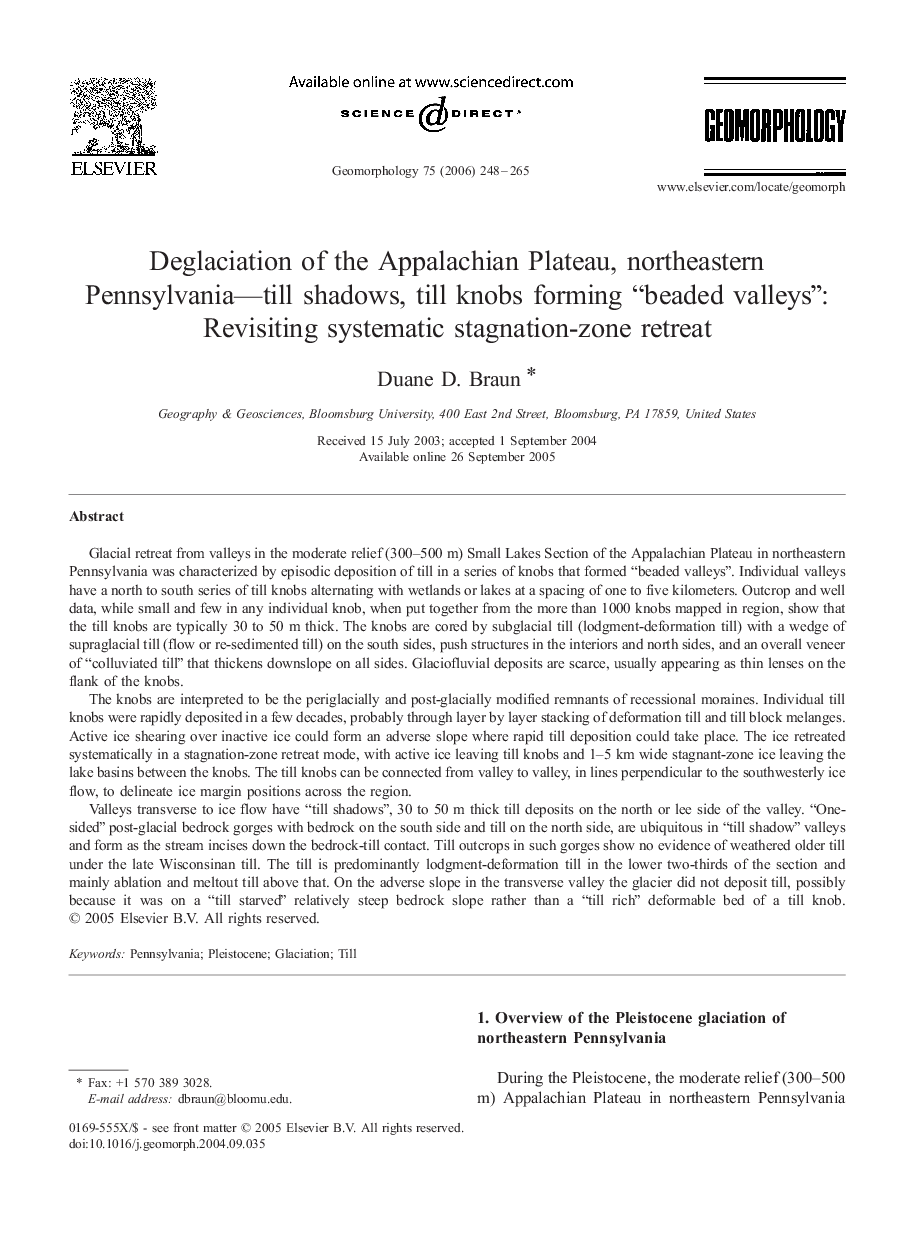| کد مقاله | کد نشریه | سال انتشار | مقاله انگلیسی | نسخه تمام متن |
|---|---|---|---|---|
| 4687583 | 1635602 | 2006 | 18 صفحه PDF | دانلود رایگان |

Glacial retreat from valleys in the moderate relief (300–500 m) Small Lakes Section of the Appalachian Plateau in northeastern Pennsylvania was characterized by episodic deposition of till in a series of knobs that formed “beaded valleys”. Individual valleys have a north to south series of till knobs alternating with wetlands or lakes at a spacing of one to five kilometers. Outcrop and well data, while small and few in any individual knob, when put together from the more than 1000 knobs mapped in region, show that the till knobs are typically 30 to 50 m thick. The knobs are cored by subglacial till (lodgment-deformation till) with a wedge of supraglacial till (flow or re-sedimented till) on the south sides, push structures in the interiors and north sides, and an overall veneer of “colluviated till” that thickens downslope on all sides. Glaciofluvial deposits are scarce, usually appearing as thin lenses on the flank of the knobs.The knobs are interpreted to be the periglacially and post-glacially modified remnants of recessional moraines. Individual till knobs were rapidly deposited in a few decades, probably through layer by layer stacking of deformation till and till block melanges. Active ice shearing over inactive ice could form an adverse slope where rapid till deposition could take place. The ice retreated systematically in a stagnation-zone retreat mode, with active ice leaving till knobs and 1–5 km wide stagnant-zone ice leaving the lake basins between the knobs. The till knobs can be connected from valley to valley, in lines perpendicular to the southwesterly ice flow, to delineate ice margin positions across the region.Valleys transverse to ice flow have “till shadows”, 30 to 50 m thick till deposits on the north or lee side of the valley. “One-sided” post-glacial bedrock gorges with bedrock on the south side and till on the north side, are ubiquitous in “till shadow” valleys and form as the stream incises down the bedrock-till contact. Till outcrops in such gorges show no evidence of weathered older till under the late Wisconsinan till. The till is predominantly lodgment-deformation till in the lower two-thirds of the section and mainly ablation and meltout till above that. On the adverse slope in the transverse valley the glacier did not deposit till, possibly because it was on a “till starved” relatively steep bedrock slope rather than a “till rich” deformable bed of a till knob.
Journal: Geomorphology - Volume 75, Issues 1–2, April 2006, Pages 248–265